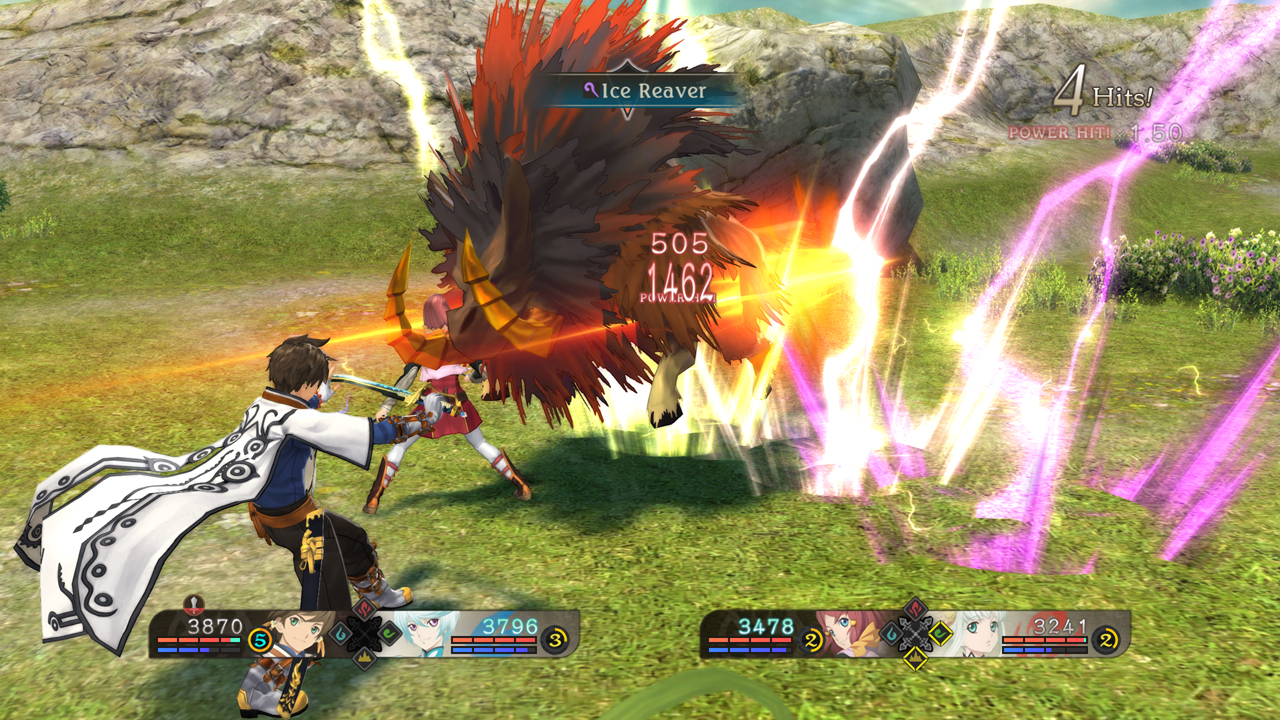Review: Tales Of Zestiria
Community
Tales of Zestiria
Bandai Namco Entertainment
Reviewed on: PS4
Also on: PC, PS3
Street: 10.20
The Tales franchise is home to some of my all-time favorite JRPG’s. Though it’s never reached the popularity that Final Fantasy or Dragon Quest did with Western audiences, the games consistently deliver enjoyable combat, delightful stories, and memorable characters. Zestiria is no exception to the rule and, rather than resting on the laurels of its predecessors, it dares to experiment a bit, with excellent results.
Legendary Destinies
Tales of Zestiria game starts high up in the realm of the seraphim, and wastes no time introducing us to our first two party members, the ever-earnest Sorey and his straight-laced companion Mikleo. Sorey is human, but he can see seraphim since he grew up around them, which makes him unique. For being a JRPG, the game’s setting is surprisingly low-fantasy. Seraph is the catchall term for guardian spirits with magical powers, most of whom assist humans who can’t ever see or hear them. Organized religions worship the seraphim, but doubts in the existence of seraphim coupled with a corrupt clergy make for a mundane world where corruption can easily seep into the hearts of the populace. Those who fall prey to the corruption become hellions, which make up the bulk of the game’s enemies. Of course, there’s a prophecy and a chosen one and all sorts of destiny bullshit that leads to Sorey becoming the Shepherd, a mythical figure blessed with the power to fight hellions and restore order. The inability of most humans to see hellions and seraphim leads to situations both hilarious and awful for Sorey and his seraph friends (five of the game’s eight party members are seraphim, and usually Sorey is the only human present). An epic battle with a corrupted river spirit becomes incredibly awkward as the humans watching ask Sorey why he’s swinging his sword at a waterspout.
From the Abyss
I don’t want to spoil too much of the story, but even though Tales of Zestiria is a standard JRPG fare, it’s a lot darker thematically than most Tales games. Anyone in the world can become a hellion if they become sufficiently corrupt, even the Shepherd, but even the vilest people can avoid this fate if their conviction to their cause is strong enough. The story doesn’t shy away from tackling issues like faith being used as a tool to control people or the difficulties of two separate races coexisting, and death remains ever-present through the story. While things start out as a clear-cut struggle between good and evil, things become muddled, and party members are rarely in agreement at pivotal moments.
Graceful Combat
Tales of Zestiria expands on the real-time combat of the Tales franchise in a phenomenal fashion, adding levels of depth requiring players to think on the fly to adapt to enemy tactics, as well as handing them a fantastic set of tools with which to tear apart foes. Instead of giving melee characters free reign and assigning spellcasters a large mana pool, all actions, from dodging to melee attacks to spells, make use of a 100-point stamina bar. The lower your stamina, the slower it recharges, though there are actions you can take to speed up the process. Combat abilities fall into three categories, with a rock-paper-scissors dynamic determining which actions can interrupt each other. Chaining different categories together in a combo reduces overall stamina cost and speeds up casting time, so experimentation is a must. Sorey also gains the ability to fuse with seraphim party members, granting him enhanced elemental abilities and new moves. Each of the playable characters has their own unique fighting style, so be sure to play each until you find your favorite. The equipment system is an entire game unto itself. Every single piece of equipment can hold up to four passive skills that are grouped on a 5×10 grid. In addition, there are bonus skills that are activated when you equip skills in a complete column, stack the same skill on top of itself, or equip skills in a horizontal configuration. These bonuses are usually so good that you’ll find yourself keeping equipment with lower base stats just to maintain your bonuses. Equipment with the same name can also be fused to transfer skills from one piece to the other, improve base stats, or create new skills entirely.
Plenty of Heart
If there’s one thing that sets Tales of Zestiria apart from other recent JRPGS, it’s the characters. Interactions between party members are fantastic, skits are a great mix of informative and hilarious, and the clashing personalities kept me entertained. Sorey and Mikleo are absolute nerds when it comes to ancient architecture, much to the amusement of the rest of the party. Mikleo tries to maintain a collected front, but he’s the easiest of the group to tease. Your mileage may vary with the comedic bits, as your enjoyment is dependent on your zest for terrible puns. Reference humor is there in bits and pieces, but never feels too out of place, and there are callbacks to previous Tales games (including a cameo fight with my all-time favorite snarky spellcaster).
There’s so much more to Zestiria than what I’ve touched on in this review. The environments are breathtaking, and what the dungeon designs lack in intricacy they more than make up for in stellar music. While it probably won’t draw in newcomers to the series, Tales of Zestiria delivers the quality content I’ve come to expect from Tales games. This is one of the best console JRPGs of the year, so if you’re looking to scratch that itch, pick up a copy and take your first steps as the new Shepherd.
